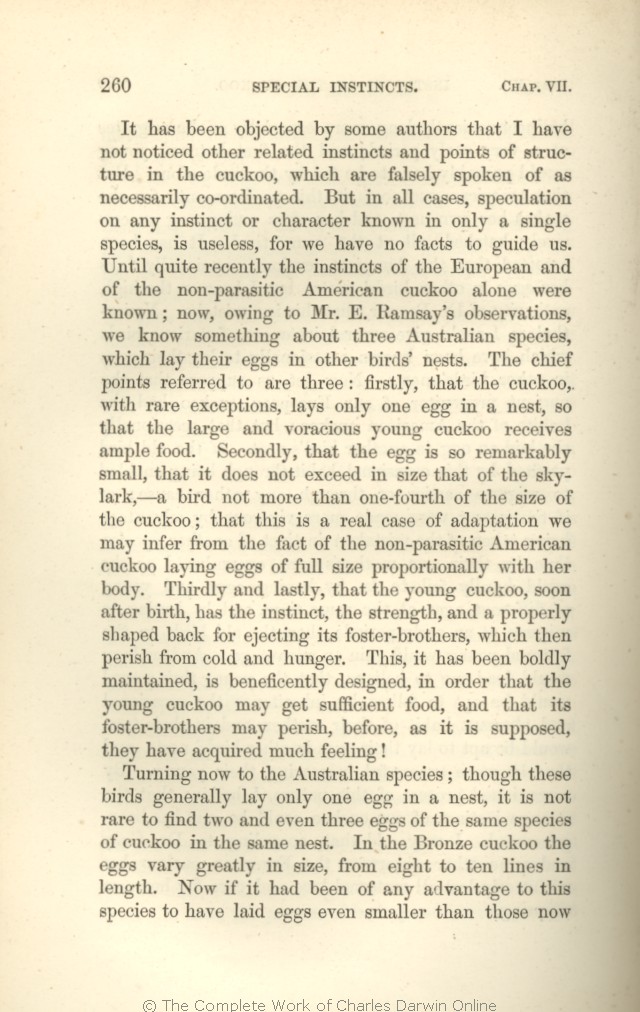It has been objected
by some authors | by some authors 1866 |
| OMIT 1869 1872 |
| points of structure 1866 |
| adaptations 1869 |
| adaptations of structure 1872 |
| falsely 1866 1869 | falsely 1872 |
| or character known in only 1866 |
| known only in 1869 |
| known to us only in 1872 |
| no 1866 1869 |
| hitherto had no 1872 |
| quite 1866 1869 | quite 1872 |
| Ramsay's 1866 1872 | | Ramsay 1869 |
| know 1866 1869 | | have learnt 1872 |
| birds' 1866 1872 | | birds 1869 |
| referred to 1866 |
| to be referred to 1872 |
| OMIT 1869 |
| firstly, 1866 | | first, 1869 1872 |
| cuckoo, 1866 1869 | | common cuckoo, 1872 |
| cuckoo 1866 | | bird may 1869 | | bird 1872 |
| receives 1866 1872 | | receive 1869 |
| is so 1866 | | are of 1869 | | are 1872 |
| small, 1866 1872 | | small 1869 |
| that it does 1866 |
| size, 1869 |
| OMIT 1872 |
| exceed in 1866 | | exceeding 1869 1872 |
| size that 1866 | | those 1869 1872 |
| a bird not more than one-fourth of the size of 1866 |
| a bird about one-fourth as large as 1869 1872 |
| cuckoo; 1866 | | cuckoo. 1869 1872 |
| this 1866 |
| the small size of the egg 1869 1872 |
| eggs of full size proportionally with her body. 1866 |
| full-sized eggs. 1869 1872 |
| Thirdly 1866 | | Thirdly, 1869 1872 |
| and lastly, 1866 | and lastly, 1869 1872 |
| maintained, is beneficently designed, 1866 |
| maintained, is a beneficent arrangement, 1869 |
| called a beneficent arrangement, 1872 |
| perish, 1866 | | perish 1869 1872 |
| before, 1866 | | before 1869 1872 |
| as it is supposed, they have 1866 |
| they have 1869 |
| they had 1872 |
| feeling! 1866 1872 | | feeling. 1869 |
|









